Chair with Red Matter
Henryk Berlewi
1950
Image
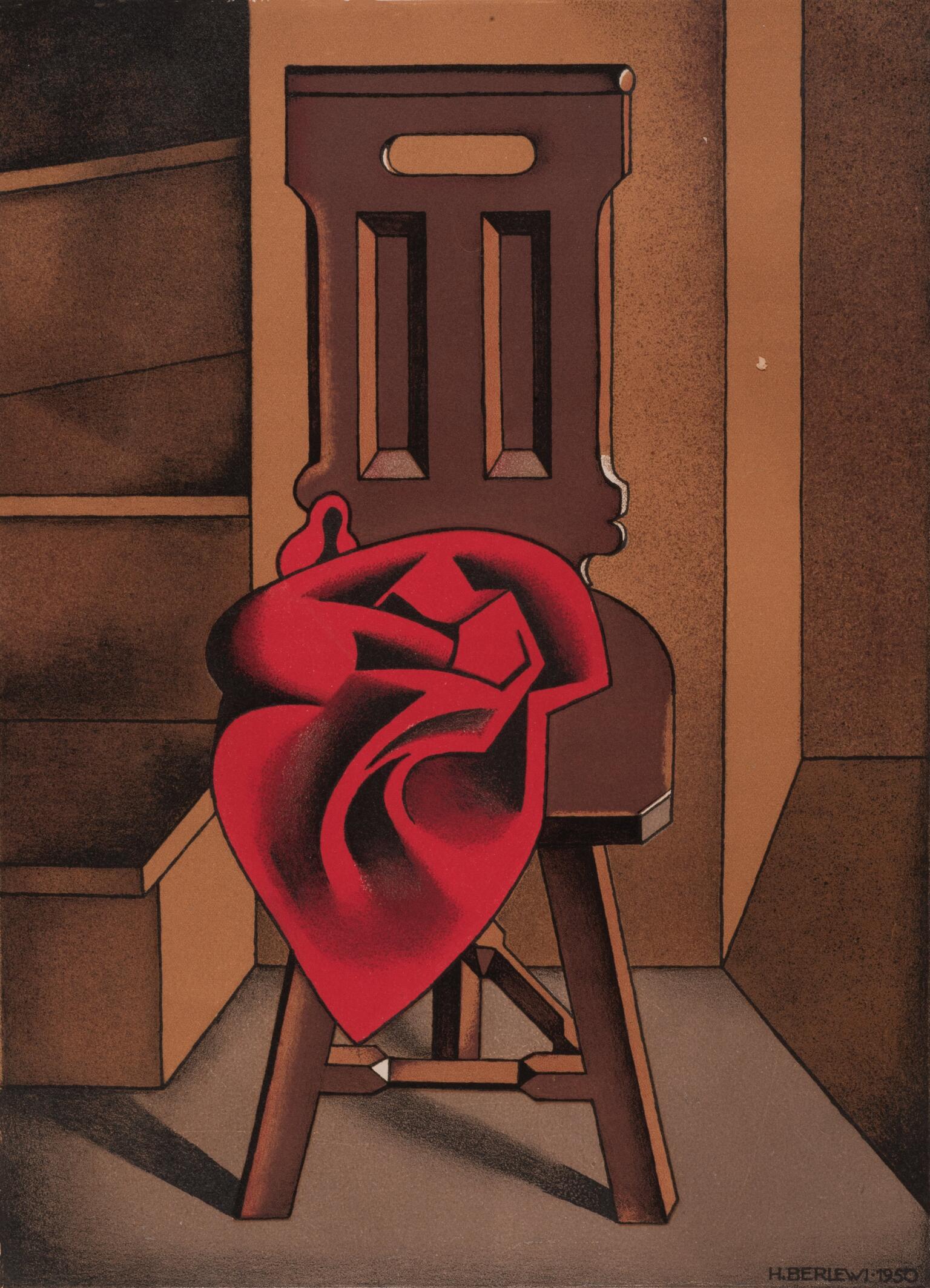
Engage with this Source
Creator Bio
Henryk Berlewi
1894–1967
The painter, graphic designer, and typographer Henryk Berlewi was born into an acculturated Warsaw family. He trained in Warsaw, Antwerp, and Paris and became known for his theater posters, book jackets, and page designs in Hebrew and Yiddish. In the 1920s, he took up constructivist abstraction, creating paintings that employed simple geometric forms. In 1928, after moving from Warsaw to Paris, he abandoned the avant-garde and began painting portraits and nudes in a figurative style. He survived the war in Nice, serving in the Resistance, and in 1957, he returned to painting abstract works. He is often considered a progenitor of optical art.
Related Guide
Visual and Material Culture in the Mid-Twentieth Century
1939–1973
Jewish visual art flourished and diversified in the postwar period, reflecting the social and political transformations taking place in the world.
You may also like

Sculpture of Ben-Gurion
By the time she created this statue of David Ben-Gurion, the first prime minister of the State of Israel, Chana Orloff had moved away from the cubist style she favored early in her career to a more…
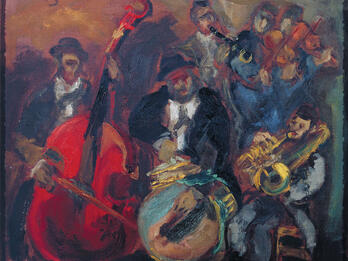
Orchestra
Mané-Katz may have painted this picture of a traditional Jewish klezmer band from memory, from his childhood in the Russian Empire. By the late 1940s, his previously dark palette had begun to shift to…
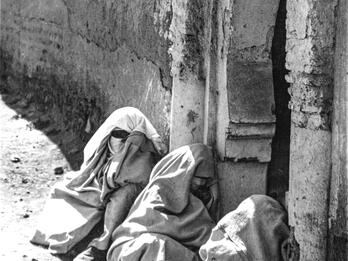
Femmes marocaines
When this ostensibly quiet scene was photographed, Morocco was in the throes of a struggle for independence against its French occupiers. The uprising was becoming increasingly violent, with riots…
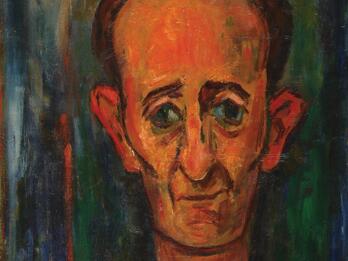
Portrait of Itzik Manger
Chaim Gliksberg was well-known for his portraits of literary figures. Here, he has pictured Itzik Manger, the celebrated Yiddish poet and playwright. Manger was particularly renowned for his modernist…

Membres de la communauté juive d’Ifrane
This photograph by Zédé Shulmann is one of the last taken of the Jewish community of Ifrane (also known as Oufrane), Morocco, whose last members immigrated to Israel in the 1950s. According to legend…
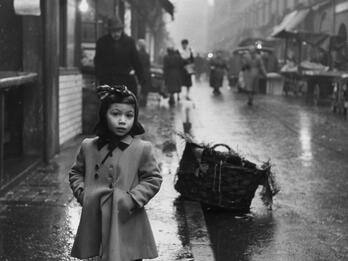
East End, London
In 1950, when this photograph was taken, much of London’s East End was in ruins, the result of heavy bombing during World War II. Its glory days as a vibrant Jewish immigrant community were over, and…

